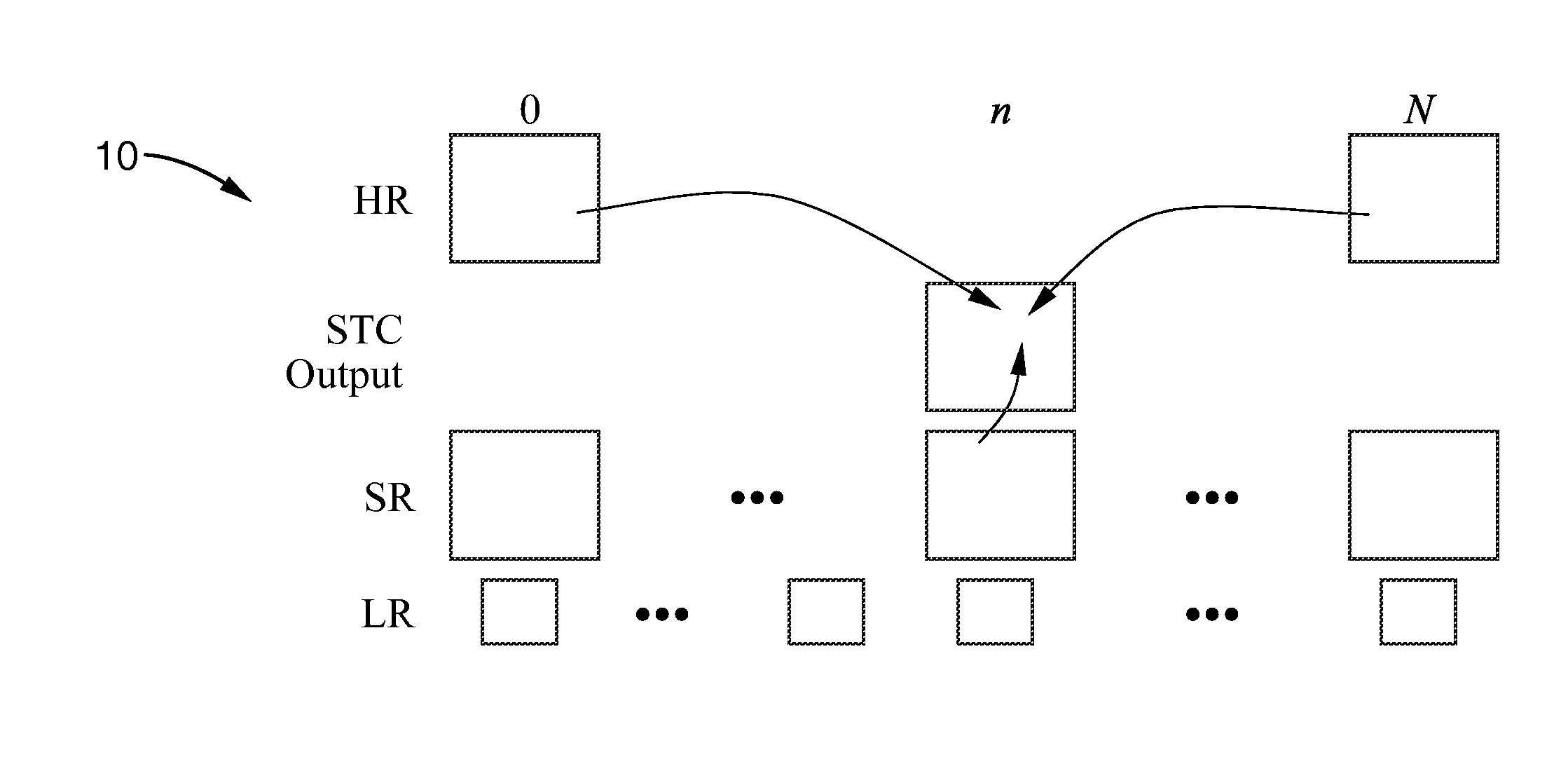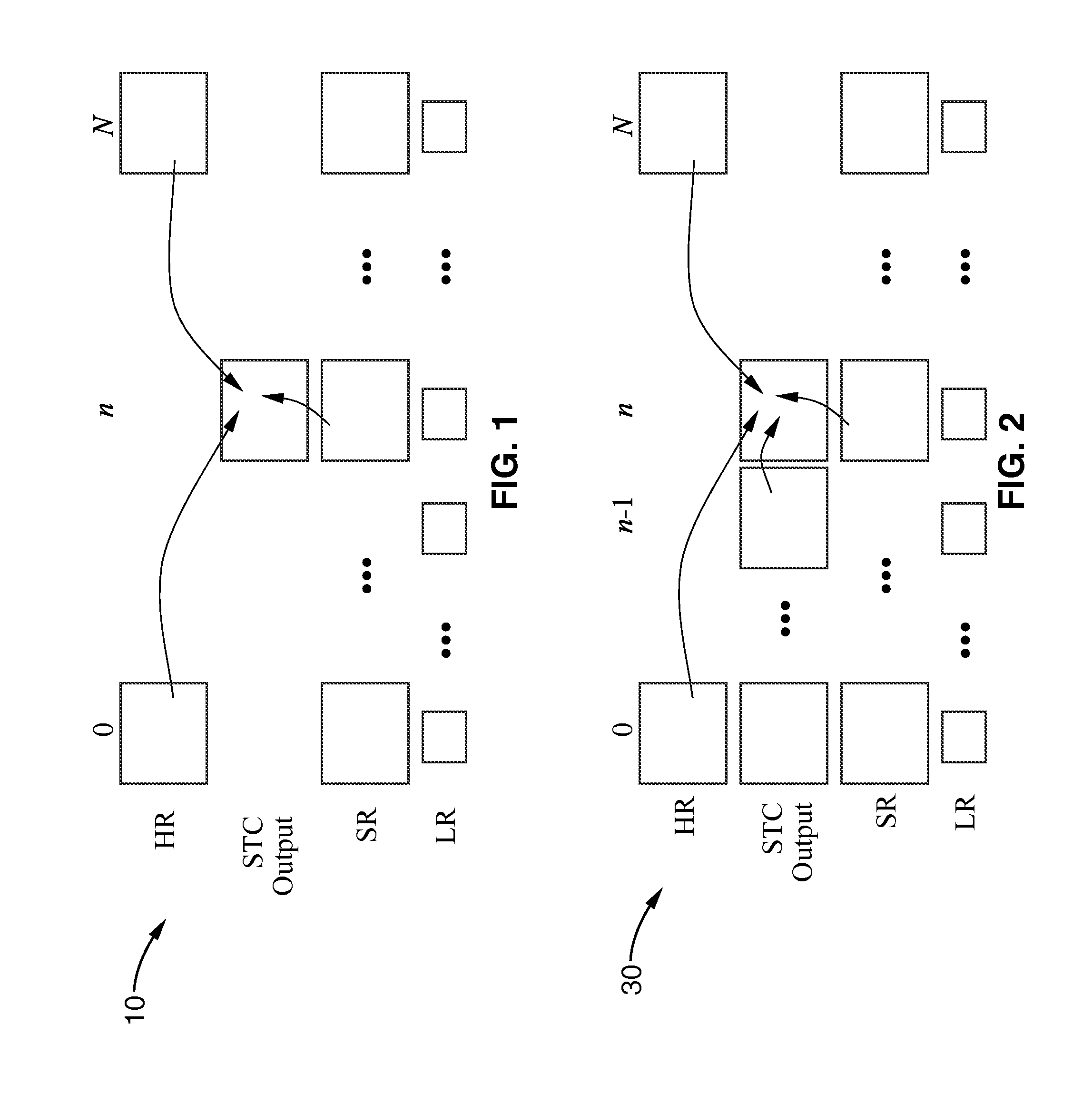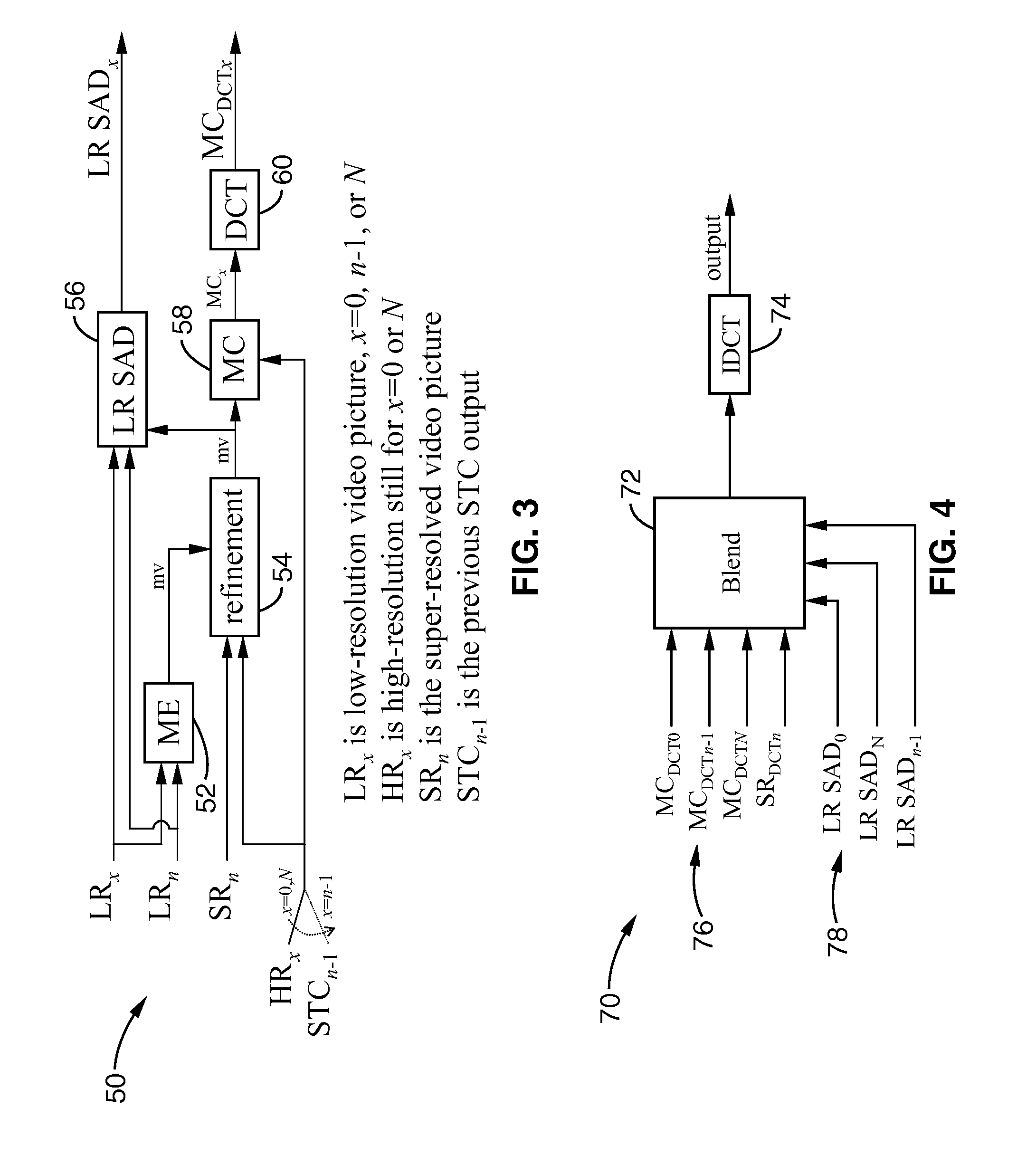Merging video with time-decimated high-resolution imagery to form high-resolution video frames
a technology of high-resolution still images and video frames, which is applied in the direction of optical-mechanical scanning signal generators, instruments, television systems, etc., can solve the problems of high-cost solutions that are not suitable for all applications, and the introduction of artifacts can be as annoying to viewers, and achieve high-resolution video output
- Summary
- Abstract
- Description
- Claims
- Application Information
AI Technical Summary
Benefits of technology
Problems solved by technology
Method used
Image
Examples
embodiment 10
[0079]FIG. 1 illustrates an embodiment 10 of the blending method according to the invention, showing creation of a single high-resolution image temporally displaced between two still images. To determine the STC output at the desired time n, the method combines multiple pictures, this example illustrating the use of up to three pictures: (1) a high-resolution still to the left (prior time / frame) (HR0), (2) a high-resolution still to the right (later time / frame)(HRN), and (3) the super-resolved image for the desired time (current frame being assembled)(SRn). The method also utilizes the original low-resolution (LR) video frames for determining SAD values. Alternatively, the method can be configured to combine either the high-resolution still to the left (HR0)or right (HRN) with (SRn). It should be noted that input (SRn) can be any desired “higher-resolution” (“SR input”), and need not necessarily be generated by a multi-frame super-resolution algorithm.
embodiment 30
[0080]FIG. 2 illustrates an embodiment 30 which extends the STC picture blending method to each frame of the sequence. The primary difference with FIG. 1 is that the method is configured to make use of the previous STC output at time n−1, when determining the STC output for time n.
[0081]The inventive method is sufficiently generic that not all four of the example inputs need to be utilized. For example, some applications may only have a single HR input, and only require a single STC output at a particular time. In such a case, the method can be readily configured to combine just HR0 and SRn when forming the STC output.
[0082]The following discussion centers on the procedure for the case of FIG. 2, in relation to which the case of FIG. 1 can be generally considered a simplified subset of that which is taught for FIG. 2.
embodiment 50
[0083]FIG. 3 illustrates an embodiment 50 of a procedure that can be applied to the high-resolution inputs toward generating an enhanced spatial resolution shutter-time compensated video output. It should be appreciated that the procedural elements can be embodied as a method, or within an apparatus such as programming executable on a computer configured for processing video images, or as a computer readable media containing programming executable on a computer configured for processing video images, or as combinations and variations thereof.
[0084]The high resolution inputs shown in FIG. 3 do not represent the desired image frame (shutter-time compensated frame), thus they can be said to be shutter times that are temporally displaced from that of the high resolution video image to be output. In the present case, these three high-resolution inputs are HR0, HRN, and STCn−1. First, the method performs motion estimation (ME) 52 on the low-resolution (LR) frames. Then the LR motion resul...
PUM
 Login to View More
Login to View More Abstract
Description
Claims
Application Information
 Login to View More
Login to View More - R&D
- Intellectual Property
- Life Sciences
- Materials
- Tech Scout
- Unparalleled Data Quality
- Higher Quality Content
- 60% Fewer Hallucinations
Browse by: Latest US Patents, China's latest patents, Technical Efficacy Thesaurus, Application Domain, Technology Topic, Popular Technical Reports.
© 2025 PatSnap. All rights reserved.Legal|Privacy policy|Modern Slavery Act Transparency Statement|Sitemap|About US| Contact US: help@patsnap.com



